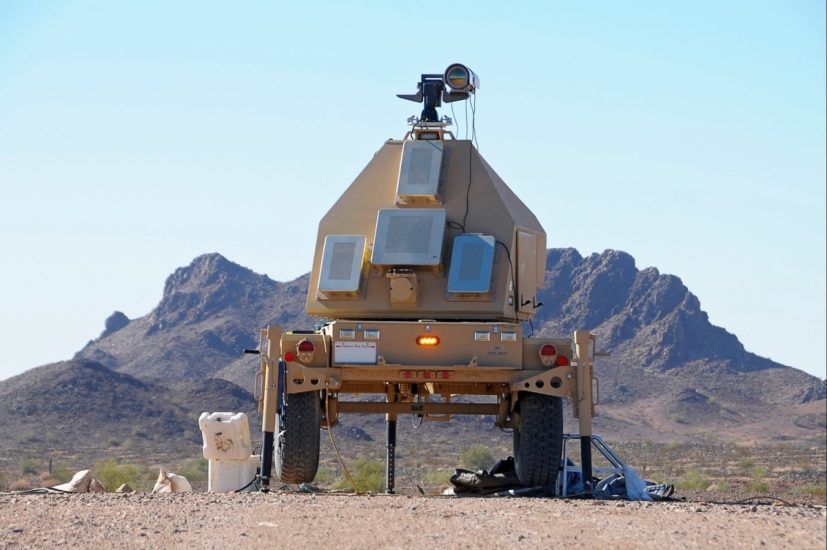The US Army Space and Missile Defense Command’s (SMDC) Technical Center uses precision track and search (PTS) Ku-band interferometric radar systems to test counter-uncrewed aerial systems (C-UAS) technology and missile systems under development. The PTS radar team supported recent flight tests at Yuma Proving Ground with an additional three upcoming test support missions at Yuma planned for this fiscal year.
Data collected by the PTS radar systems during support provides test customers with the necessary means to verify and validate the functionality and operational capability of their tactical systems, said Jordan V. Dupree, a general engineer with Targets Division, Engineering and Test Directorate.
In a February 7 article on the US Army website, SMDC’s Jason Cutshaw explains that the first generation radar system, known as PTS-1 or Camelback, was built in 2007 using leftover radio frequency hardware from the non-line-of-sight cannon system and debuted as a backup test asset in early 2008 tracking rockets and mortars. By 2010, the PTS-1 radar system had earned a reputation for providing reliable, high-quality support and was promoted to a primary truth sensor, Dupree said. In 2013, the Technical Center was funded to build a higher-powered second generation radar system, known as PTS-2, implementing newer technology and filing capability gaps observed over the three years of support with the first generation system.
Since then, Dupree said the two radar systems have worked in tandem to annually provide an average of 15 weeks support to both internal and external Army test customers and starting in 2017 support to C-UAS test efforts.
“The PTS radars are not being developed as a tactical asset for the Army but rather assist our test customers in the development of their tactical assets,” Dupree said. “The majority of the tactical systems supported by the PTS radar systems over the past 15-plus years have been deployed into theater to directly support the warfighter.”
The radar team is composed of Dupree and John E. Graupman III with auxiliary support provided by the young scientists and engineers from the Technical Center’s Concept Analysis Division (CAD).
“Over the years, I have heavily relied on the CAD for assistance with operating the two PTS radar systems and generating the required data end-product for our test customers,” Dupree said. “The CAD’s dedication and continued support to the PTS programme, along with their seamless integration into the team, have been essential in maintaining the level of support and reliability our test customers have come to expect.”
He said the PTS radar team mainly provides support at Yuma Proving Ground, Arizona, but has also supported missions at White Sands Missile Range, New Mexico, and Redstone Arsenal.
“The PTS radar team supported recent flight tests at Yuma Proving Ground and the radar was able to successfully acquire and track the missile targets during three launches that occurred Jan. 15-17 with good data collections on all launches,” Dupree said. “This event provided the PTS radar team with its first opportunity to track and collect data on new experimental missile systems under development.”
Graupman, a computer scientist, has attended many test events as a radar operator and learned about data analysis. “The data collected will be used to improve acquisition and tracking of targets in preparation for testing future C-UAS capabilities where the PTS radar systems will serve as the primary truth sensor,” Graupman said.
For more information
Image: US Army




